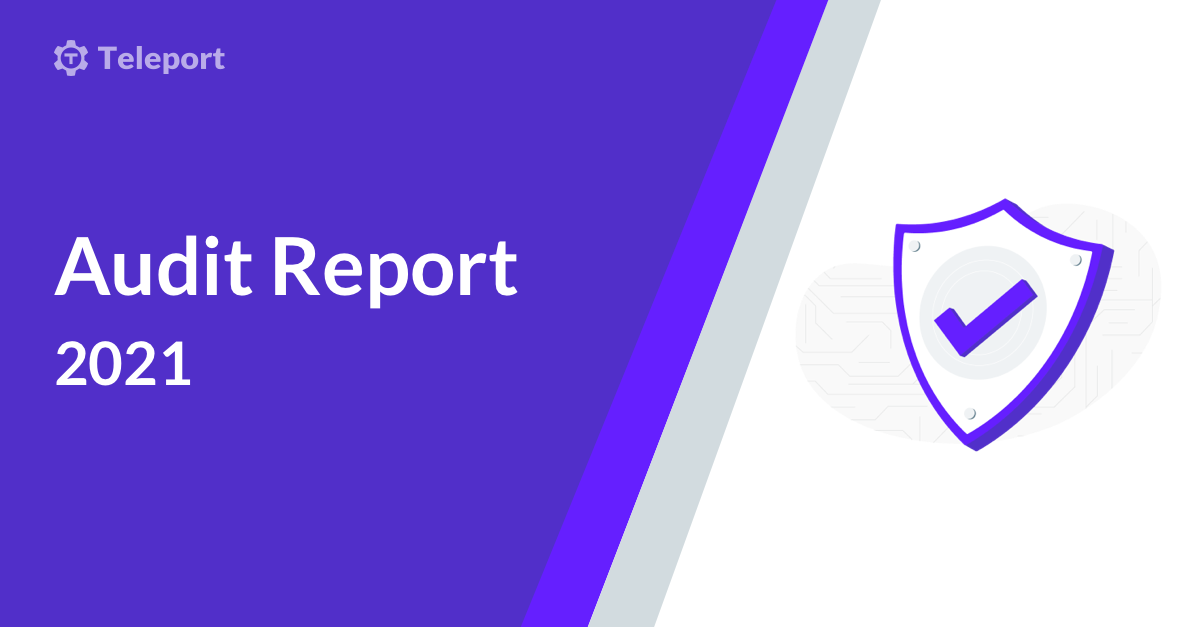Table Of Contents
Home - Teleport Blog - Teleport in 2021: Security Audit Results - Apr 8, 2021
Teleport in 2021: Security Audit Results

We now live in an era where the security of all layers of the software stack is immensely important, and simply open-sourcing a code base is not enough to ensure that security vulnerabilities surface and are addressed. At Teleport, we see it as a necessity to engage a third party that specializes in acting as an adversary, and provide an independent analysis of our sources.
In 2021, we have continued to engage with Doyensec, an independent security research and development company, to provide a thorough independent analysis of Teleport. Here is the full report for Teleport. You can find all of our security audits here.
Teleport Security Audit Results
As we mentioned in the Teleport 5.2.1 release notes, the most serious issues found related to Teleport Application Access and Trusted Clusters.
For Application Access, if an attacker could convince a user to click on a malicious link, the attacker could steal the victim’s session cookie or force them to log into an attacker-controlled Application Access account.
For Trusted Clusters, under certain circumstances, an already privileged user within a root cluster could potentially elevate their privileges further by gaining the exact same roles in the leaf as they have in the root cluster (instead of the mapped roles).
After the re-assessment, all issues with any direct security impact were addressed. From the report:
In March 2021, Doyensec performed a retesting of the Teleport platform and confirmed the effectiveness of the applied mitigations. All issues with direct security impact have been addressed by Teleport.
Accepted Risks
While all issues with direct security impact have been addressed, we do want to draw attention to four issues that we did not address and accepted the risk.
We decided to forgo mitigating these issues because their impact in this specific circumstance was minimal and a more comprehensive mitigation (which would be outside the scope of a patch release) was planned.
Decompression Bomb in Decompress Functions
TEL-Q420-1 is an informational finding with no direct security risk. A legacy
API endpoint which is slated to be removed is included in Teleport 5.2.1 to
maintain our backward compatibility promises with Teleport 4.4.
Cluster IP Leakage Through Round-Robin DNS Abusing Direct Session URLs
TEL-Q420-3 is a low-severity vulnerability where an attacker can leak the
existence (but not access) of internal resources by convincing the user to
click on a malicious link.
We have a much more comprehensive fix for this issue planned in Teleport 6.1: U2F for Kubernetes and SSH sessions as outlined in RFD 14 and RFD 15. However, in the interest of not delaying the security release, we felt it was appropriate to accept the risk on this issue until Teleport 6.1 is released.
Missing Applications Session Invalidation on Parent Session Invalidations
TEL-Q420-9 is a low-severity vulnerability that prevents a user from logging
out all Application Access sessions with one click. This is due to a design
decision where each Application Access session is independent and requires
independent logout.
We have a much more comprehensive mitigation for this planned in Teleport 7: User locking as outlined in #3360. However, in the interest of not delaying the security release, we felt it was appropriate to accept the risk on this issue until Teleport 7 is released.
Systemic Server-Side Request Forgery in Single Sign-On
TEL-Q420-10 is a medium-severity vulnerability where a Teleport administrator
could create a SSO connector that is vulnerable to SSRF, allowing that Teleport
administrator access to internal resources.
While SSRF is a serious vulnerability, in the single tenant Teleport Enterprise deployment model, the risk is minimal as Teleport administrators already have direct network access to internal resources.
Tags
Teleport Newsletter
Stay up-to-date with the newest Teleport releases by subscribing to our monthly updates.

Subscribe to our newsletter

